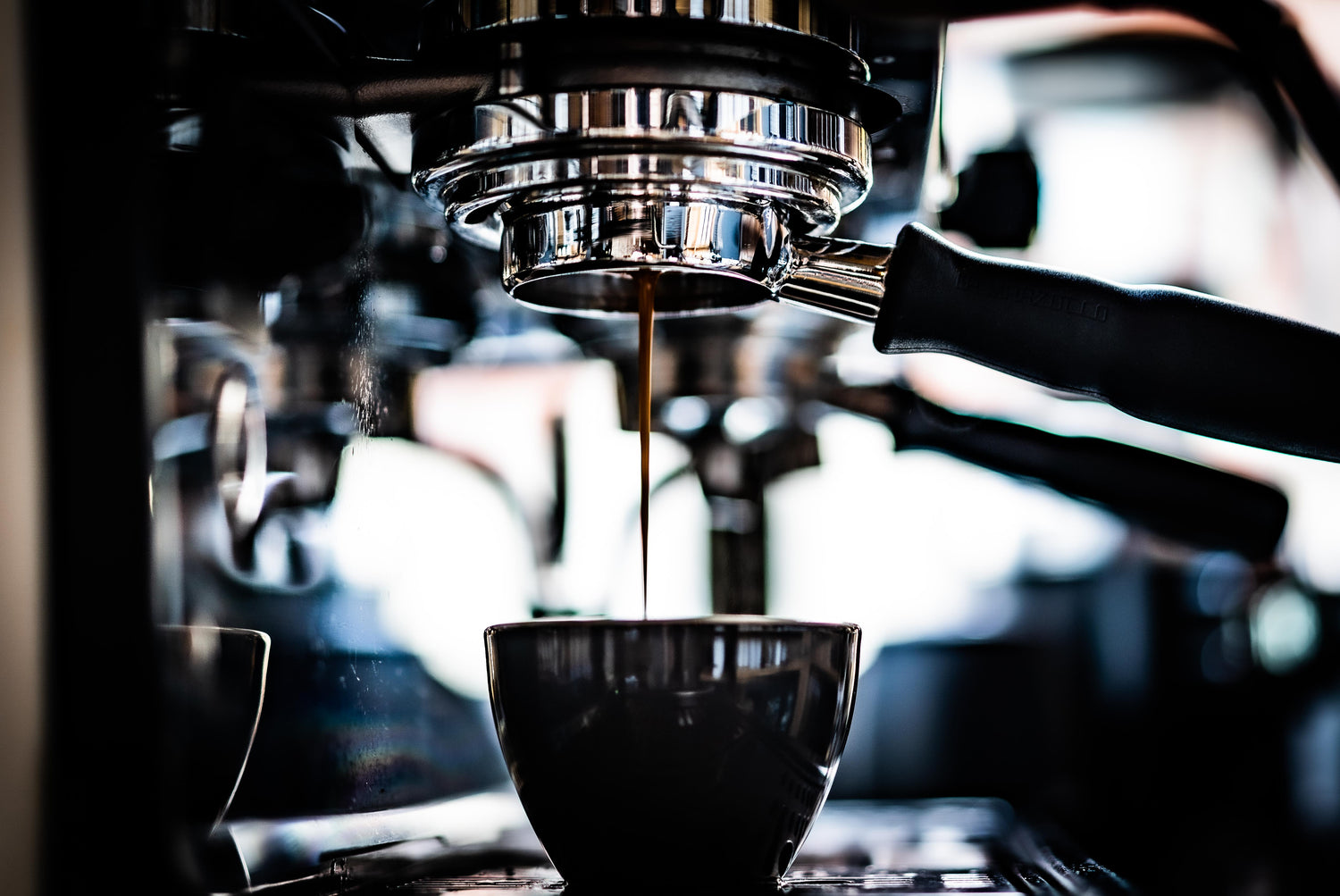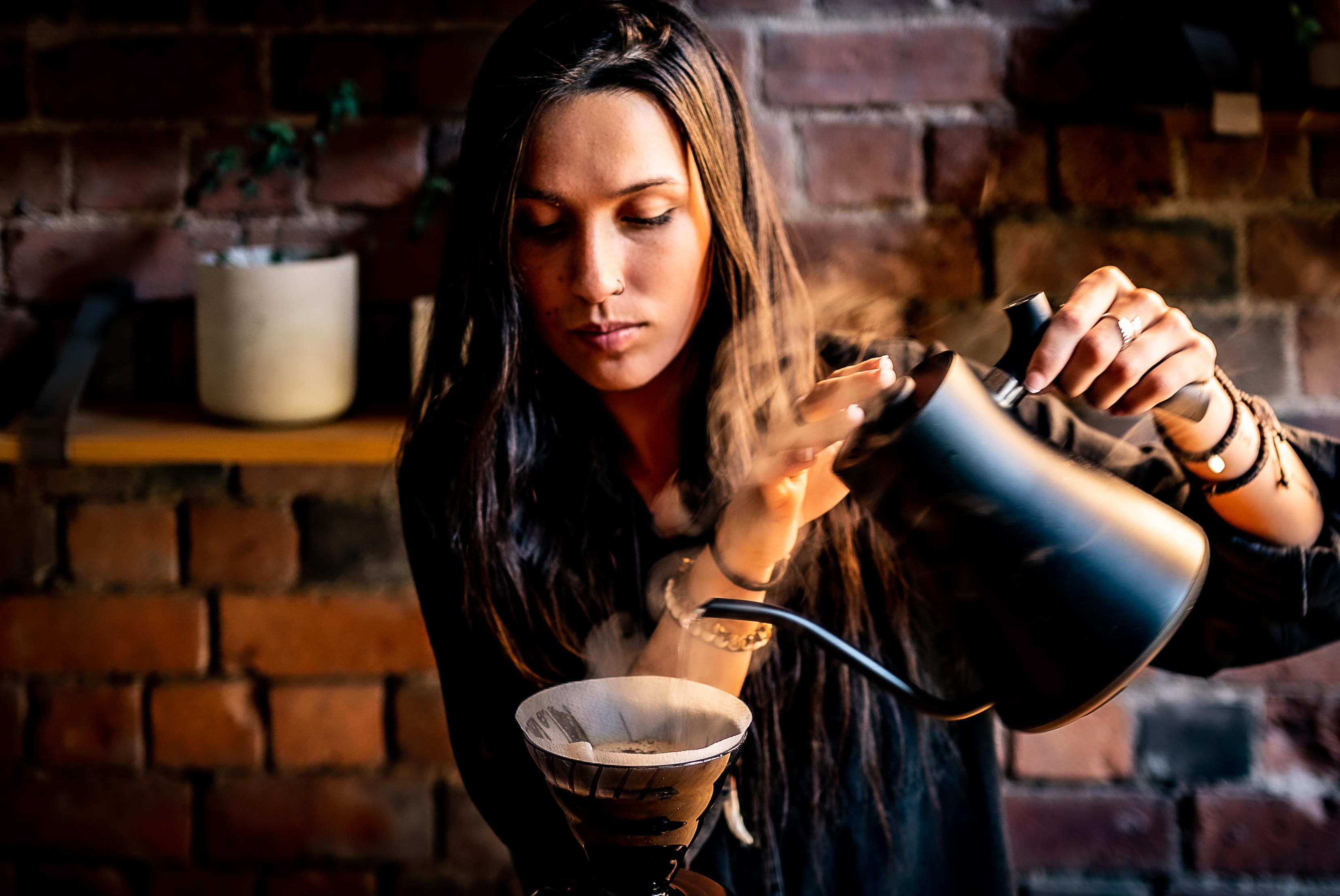Later this month we're re-launching our coffee blends and adding a new one to the line-up too. Before these new blends drop we thought we'd take the opportunity to have a closer look at how we brew the small but mighty espresso ...
Espresso is defined by it’s preparation: a concentrated form of brewing where hot water is pumped through a dose of finely ground, compressed coffee. The result: a small, intense drink which is delicious in itself as well as forming the basis for a larger menu.
Perfecting espresso requires time and patience. Espresso is probably the most complicated way to brew coffee. As well as the equipment, you need good technical skills and a consistent and methodical approach - great espresso is all about following a recipe.
Baristas talk about ‘dialing-in’ a coffee - this phrase describes the process of setting the grinder correctly and following a recipe for the particular coffee they’re serving that day. Once you’ve mastered the basic procedure there’s always a little trial-and-error needed, in order to get a coffee singing …
A good espresso is well worth it - delivering intensity, texture and flavour. For those who prefer to add milk, the espresso creates a perfect base and is often embellished this way as a flat white, latte or cappuccino.
Preparing Espresso
A starting point for our espresso blends is an 18g dose of coffee to make a 36-40g shot of espresso, extracted in 28-32 seconds.
When brewing espresso in our coffee shop, we like to use coffee that has been rested for at least 2 weeks, our machine is set to 94°C and 9 bar of pressure - this helps create balanced extractions of our omni-roasted coffees.
Described below are the basic steps you need to follow in order to produce clean and balanced shots.
Step 1:
Foundations. Use a clean, dry cloth to thoroughly wipe the portafilter - you need to make sure it’s free of any coffee grounds and residual oils.

Step 2:
Weigh your coffee and water. The ratio of coffee to water is crucial to the final result. We recommend a 1:2 ratio as a good starting point e.g. use 18g of coffee to make a 36g espresso.

Step 3:
Preparing the coffee puck. Make an even bed of coffee in the portafilter - no gaps or mounds. Take your tamper and press firmly onto the grounds to compact them into a puck.

Step 4:
Brew time. Gently insert the portafilter into your espresso machine, making sure it is seated tightly into the grouphead. Pull the espresso to the target weight, making sure to start your timer as soon as you start the espresso shot. The brew time is determined by the resistance of the coffee puck to the water from the machine.

The main elements that will influence the brew time are the grind size, dose and tamping pressure. By keeping the coffee and water dose the same (Step 2) and being consistent with your puck preparation and tamp pressure (Step 3) you only have one variable to adjust - the grind size.
A finer grind will slow the brew time. A coarser grind will allow the water to pass through the coffee more quickly, for a faster brew time. Setting the grinder correctly is so important, in order to brew espresso well you need a good quality grinder that is suitable for espresso brewing.
Making good espresso is all about the finer details. Even small changes can have a huge impact on the flavour, texture and strength of your espresso. Play with the grind to adjust brew time and adjust the volume of the espresso to affect intensity: a shorter shot will be more intense where as a longer shot can be more balanced but with less texture. Find the brew that works for you and enjoy the journey!






Leave a comment
This site is protected by hCaptcha and the hCaptcha Privacy Policy and Terms of Service apply.